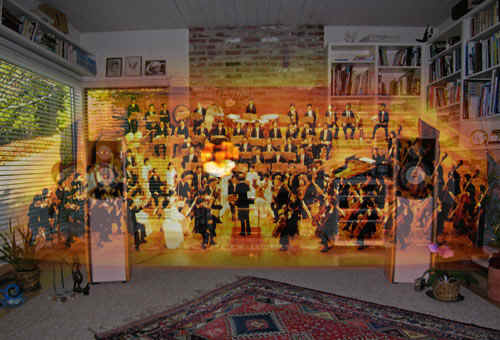I have Q-sound effects flying above my head whenever I play those. These rely on controlled phase-shifts of mono-signals in order to create the 3D displacements.
I also sit and enjoy the perception of voices and sources coming from off the vertical plane when I'm in my listening room - but a little thought tells us that this is more likely to be a function of our apparatus of perception than the actual system. Where does the time shift information come from (stereo relies upon the time and level differential between signals registered in the horizontal plane by microphones used to record a source. For there to be a similar ordering of sources in the vertical plane, we would need microphones placed accordingly; and similar speakers placed accordingly in the vertical plane in our listening rooms, dedicated to the signals from the vertical mic's.)
I also sit and enjoy the perception of voices and sources coming from off the vertical plane when I'm in my listening room - but a little thought tells us that this is more likely to be a function of our apparatus of perception than the actual system. Where does the time shift information come from (stereo relies upon the time and level differential between signals registered in the horizontal plane by microphones used to record a source. For there to be a similar ordering of sources in the vertical plane, we would need microphones placed accordingly; and similar speakers placed accordingly in the vertical plane in our listening rooms, dedicated to the signals from the vertical mic's.)
Last edited:







